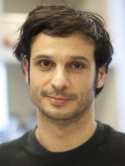| Abstract: |
Human pluripotent stem cells (hPSCs) offer unique opportunities for studying human biology, modeling diseases, and therapeutic applications. The simplest approach so far to generate human PSC lines is through reprogramming of somatic cells from an individual by defined factors, referred to simply as reprogramming. Reprogramming circumvents the ethical controversies associated with human embryonic stem cells (hESCs) and nuclear transfer hESCs (nt-hESCs), and the resulting induced pluripotent stem cells (hiPSCs) retain the same basic genetic makeup as the somatic cell used for reprogramming. Since the first report of iPSCs by Takahashi and Yamanaka (Cell 2006, 126:663-676), the molecular mechanisms of reprogramming have been extensively investigated. A better mechanistic understanding of reprogramming is fundamental not only to iPSC biology and improving the quality of iPSCs for therapeutic use, but also to our understanding of the molecular basis of cell identity, pluripotency, and plasticity. Here, we summarize the genetic, epigenetic, and cellular events during reprogramming, and the roles of various factors identified thus far in the reprogramming process. © 2015 Wiley Periodicals, Inc. |





